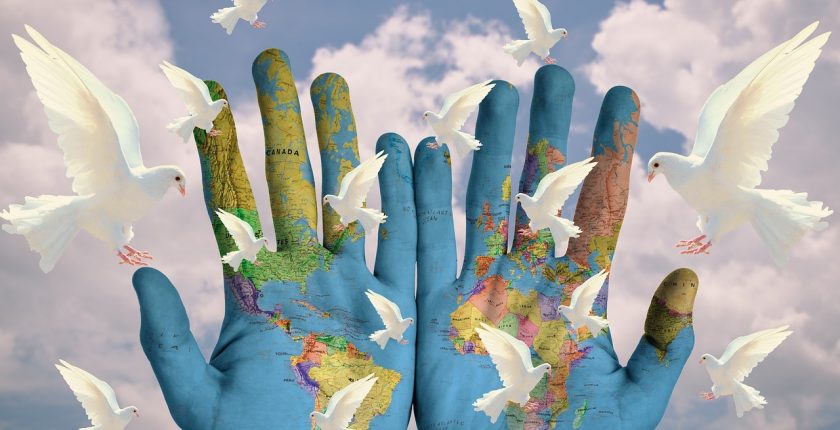Women’s key role in peacebuilding – The potted timeline of success and failure following resolution 1325.
Women do not instigate wars yet suffer disproportionately from the consequences of conflict. They are more likely to suffer sexual violence, poverty and discrimination.
After the resolute efforts to elevate women’s rights and highlight the inequalities of women in conflict, Resolution 1325 was adopted unanimously by the UN security council in October 2000. One of the key aims was to increase women’s participation in securing and maintaining peace. Over two decades on, what progress has this resolution enabled and where has it yet to see success?
Women’s participation in securing and maintaining peace – Why are women key for peace.
Within many societies, if not all, women are more likely to have their concerns and priorities swept aside by policymakers. Yet if peace is to be successful all concerns need to be addressed and therefore equal representation of gender is key.
Additionally, women are thought to be naturally better suited to build consensus and compromise. Whether this is due to nature or due to necessity is under debate. In either case, women’s ability to centre on solidarity and listening has been noted as an essential component of successful peacebuilding.
Success stories since Resolution 1325.
2004 saw the first-ever Somali women sign a peace agreement ending the Somali civil war. Asha Haji Elmi, a Somali peace activist, instigated the creation of a women’s ‘Sixth Clan’ into negotiations which were previously dominated by the 5 major Somali clans, all headed by men. Asha’s ingenious move resulted in the permanent representation of women within the political arena leading to 12% of seats in Somalia’s transnational Federal Parliament now being reserved for women.
2012 saw the Special Court of Sierra Leone convict the first African head of state, Liberian President Charles Taylor, for aiding in crimes such as murder, rape and sexual slavery. The much-needed emphasis on crimes against women was made possible by the fact that the highest-ranking positions within the court were held by women.
2019 the image of Alaa Salah, also known as “Women in White” became renowned for symbolizing the pivotal role women protesters played in Sudan’s revolution. Her role symbolised the high contribution Somali women had in ending 30 years of authoritarian rule.
Why women remain underrepresented.
These successes demonstrate how resolution 1325 aided in a growing recognition for the need for equality to ensure peace. Yet despite this the presence of women in peacebuilding and political operations is disappointingly low;
According to UN Women, only 13% of negotiators, 6% of mediators and 6% of signatories in major peace processes worldwide are women. Additionally, women’s representation in national parliaments is still low at 24.9%, with countries suffering from conflict even lower at 18.9%.
Governments still fail to fully recognise and endorse that women contribute to the success of sustainable peace. This often leads to tick-box exercises where women are incorporated into mediating teams but not given the legitimacy to include gender perspectives into the negotiations.
This is informed by a persistent culture that continues to understand a women’s place to be outside that of decision making on a large scale. Although there has been pronounced progress towards women’s inclusion into the peace process through mediation, politics and revolutions, there is still a long way to go. It might be helpful to remember that resolution 1325 isn’t just fighting today’s gender discrimination but social structures that have been built over centuries.
References
Devex Editor. (27th May 2020) Q&A: Why women peacekeepers are needed now more than ever, https://www.devex.com/news/sponsored/q-a-why-women-peacekeepers-are-needed-now-more-than-ever-97248
UNWomen. (2020) In Focus: Women, Peace, Power, https://www.unwomen.org/en/news/in-focus/women-peace-security#news
United States Institute of Peace. (2020) What is UNSCR1325, https://www.usip.org/gender_peacebuilding/about_UNSCR_1325#:~:text=How%20did%20UNSCR%201325%20come,of%20conflict%20on%20their%20lives.
M, Fleshman. (February 2003) Are women better peacemakers?, https://www.un.org/africarenewal/magazine/february-2003/are-women-better-peacemakers
A,E,Petri. (13th October 2020) Women at the Peace Table Yields Better Results. Why Is It Still So Rare?, https://www.nytimes.com/2020/10/13/us/women-peace-process-afghanistan-sanam-naraghi-anderlini-.html
Global Peacebuilders. (2020) Asha Elmi,http://global-peacebuilders.org/peacebuilders-2/asha-elmi/
B, Bigombe. (31st October 2020) Sustainable peace cannot be achieved without women, https://www.aljazeera.com/opinions/2020/10/31/sustainable-peace-cannot-be-achieved-without-women/

